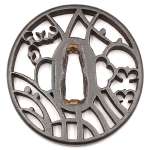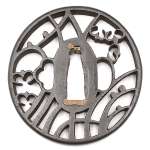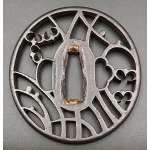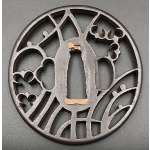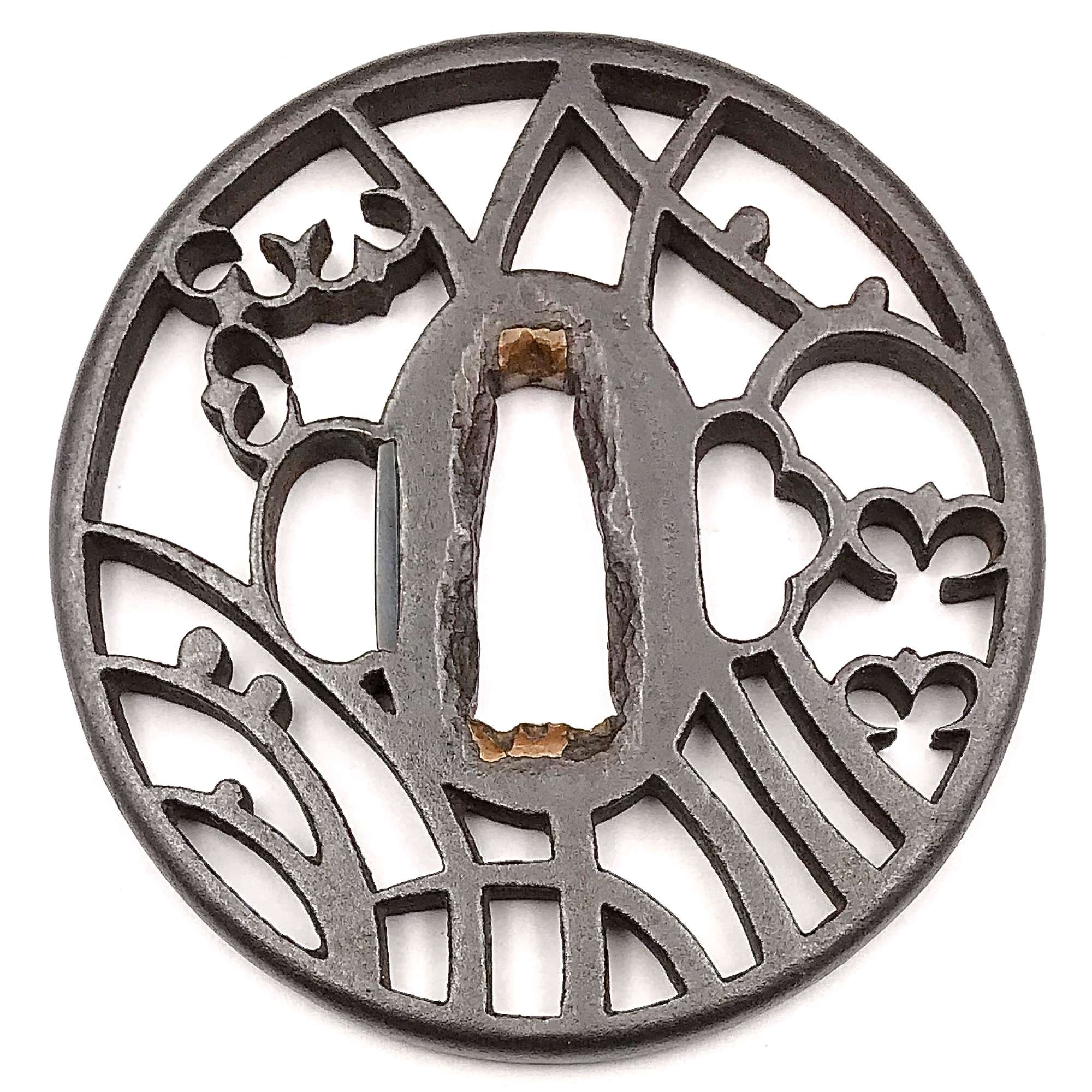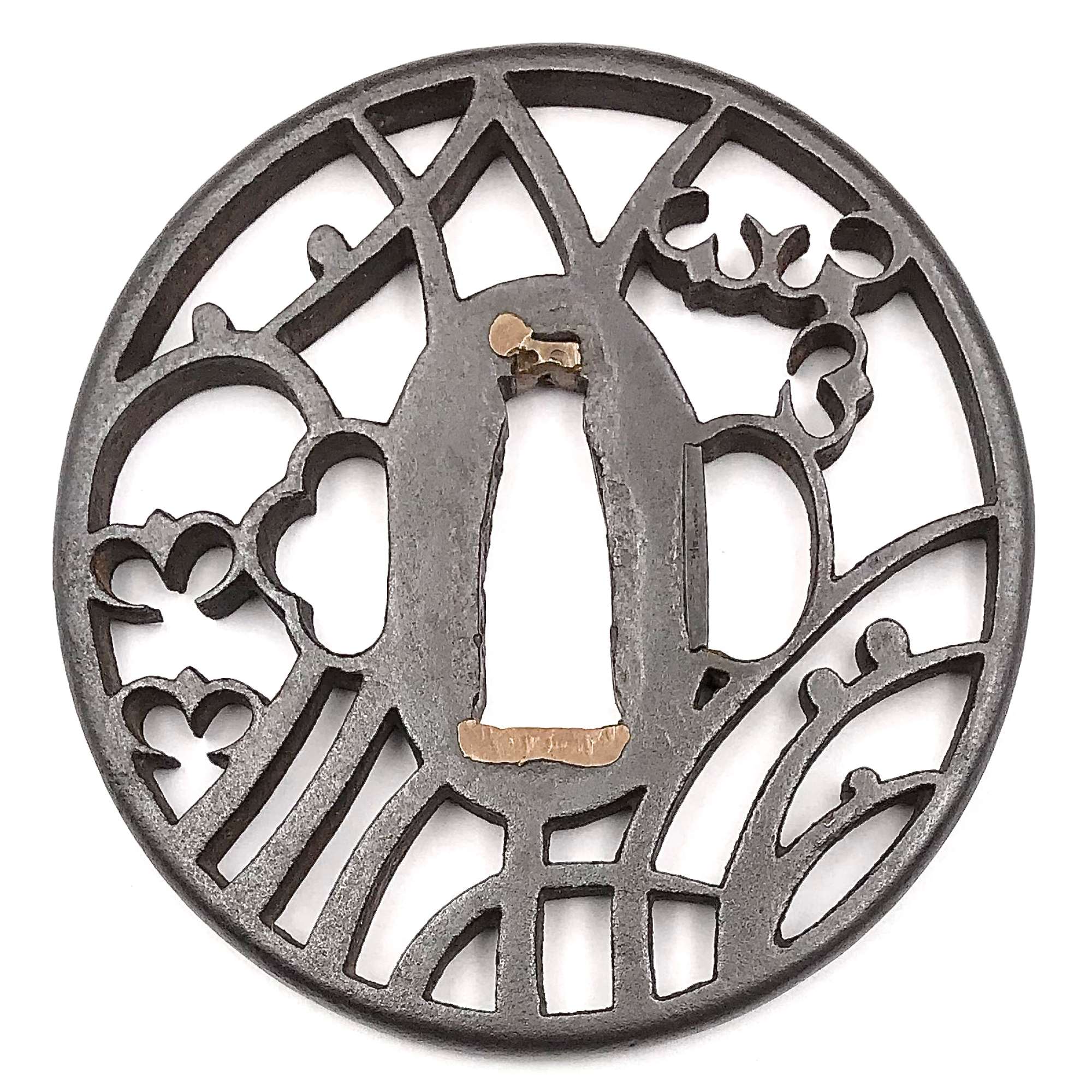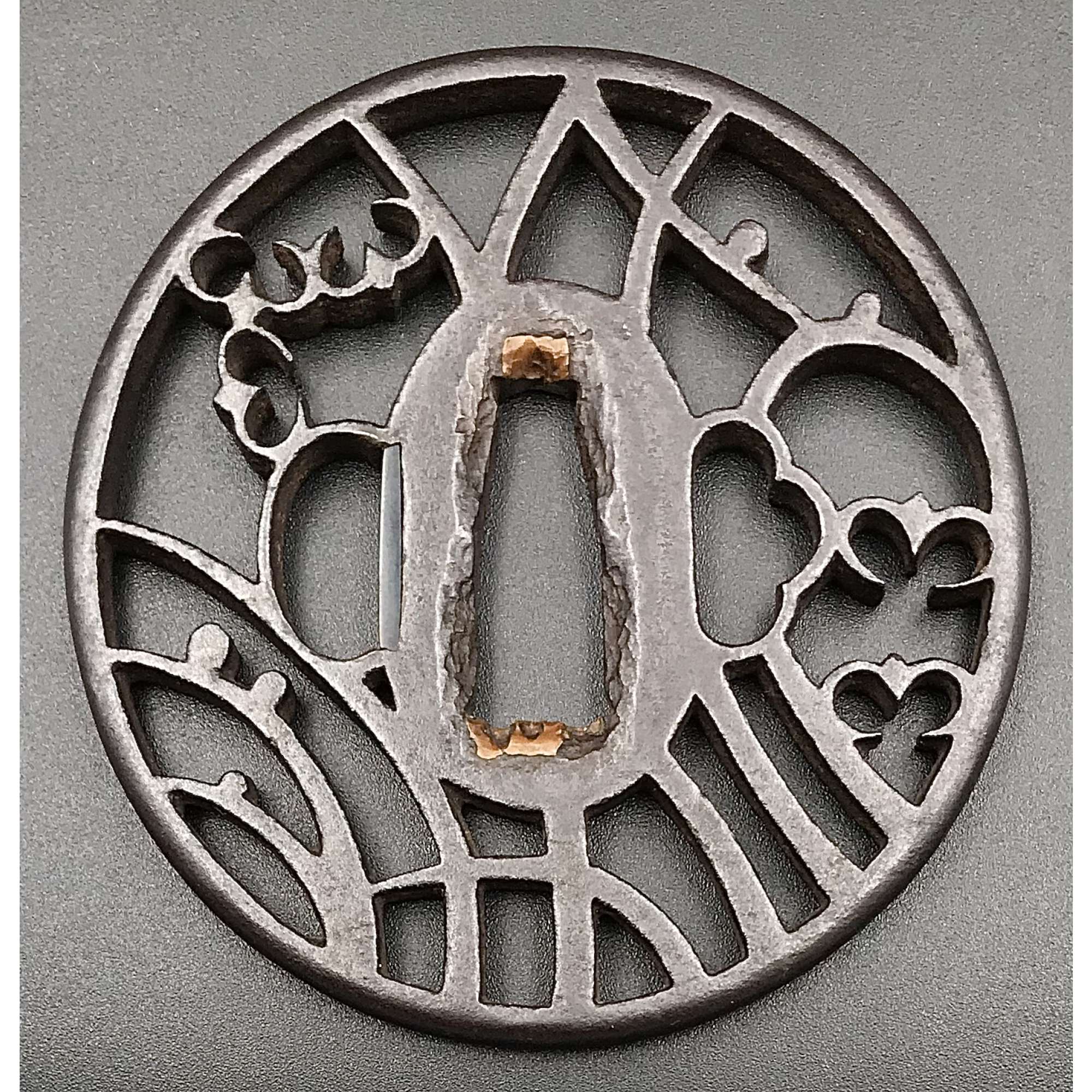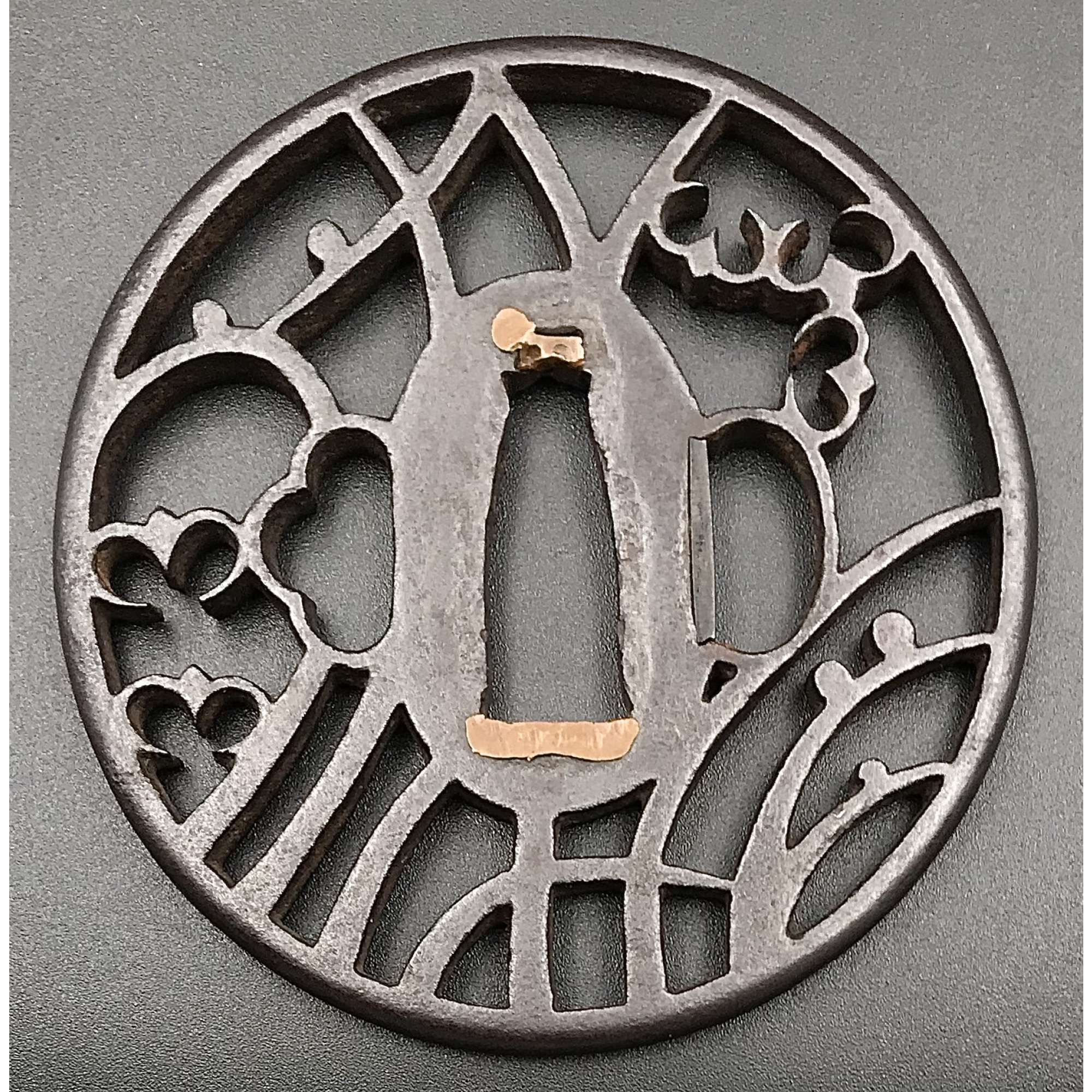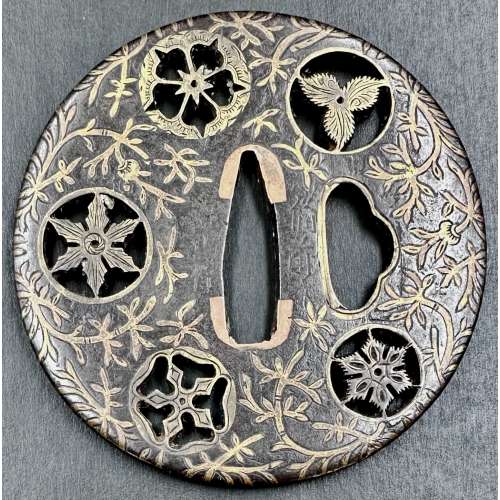Iron tsuba of slightly elongated round form with design of wild geese and drops on pampas grass (masashino) in openwork (sukashi). Rounded rim. Copper sekigane.
Owari school.
Early Edo period: early 17th century (Kan-ei era).
Height: 78.8 mm. Width: 76.3 mm. Rim thickness: 6.1 mm. Center thickness: 6.4 mm.
Provenance: Sasano Masayuki Collection, № 169.
A description of musashino symbolism can be found at Symbols of Japan by Merrily Baird [Merrily Baird. Symbols of Japan. Thematic motifs in art and design. Rizzoli international publications, Inc., 2001]: Musashino – “the plain of Musashi – a large expanse in the Tokyo area, was celebrated in poetry for the grasses that grew there before the recent era of industrialization… The use of Musashino themes was particularly common in the Momoyama and Edo periods”. Pampas grass with dew drops and wild geese in flight collectively provide strong autumnal connotation.


